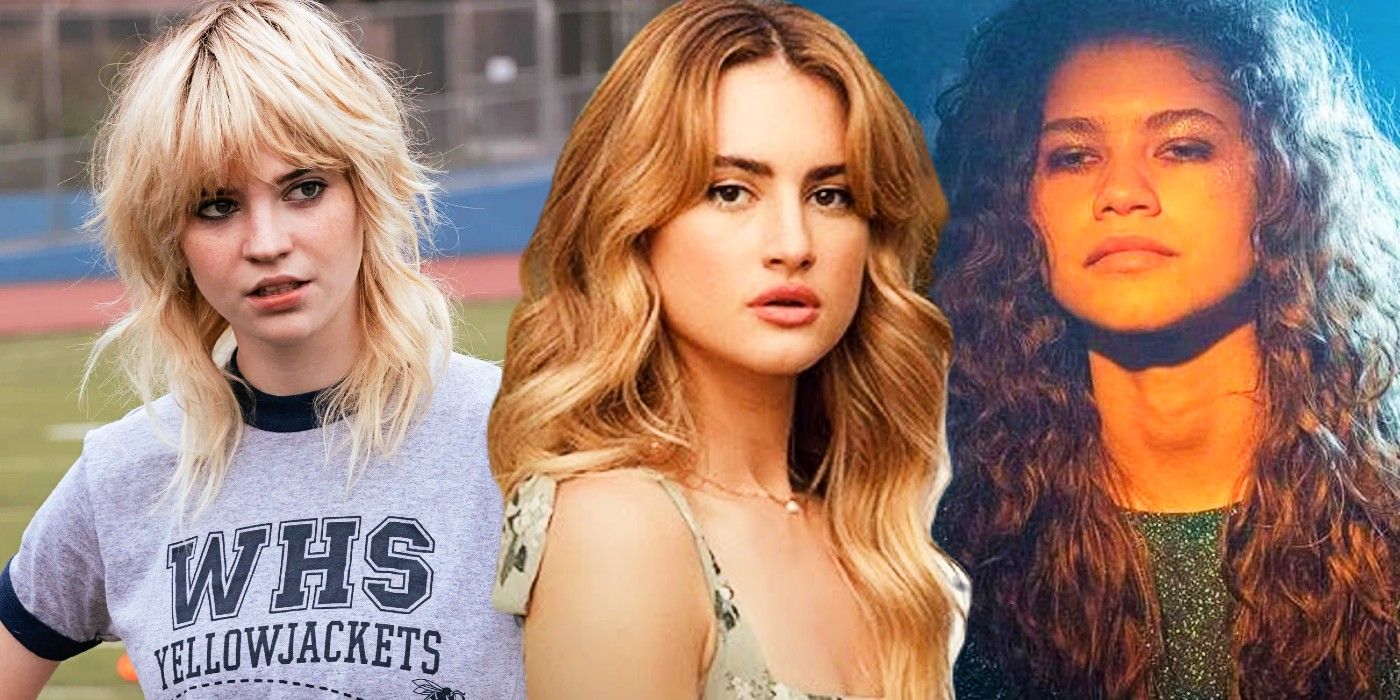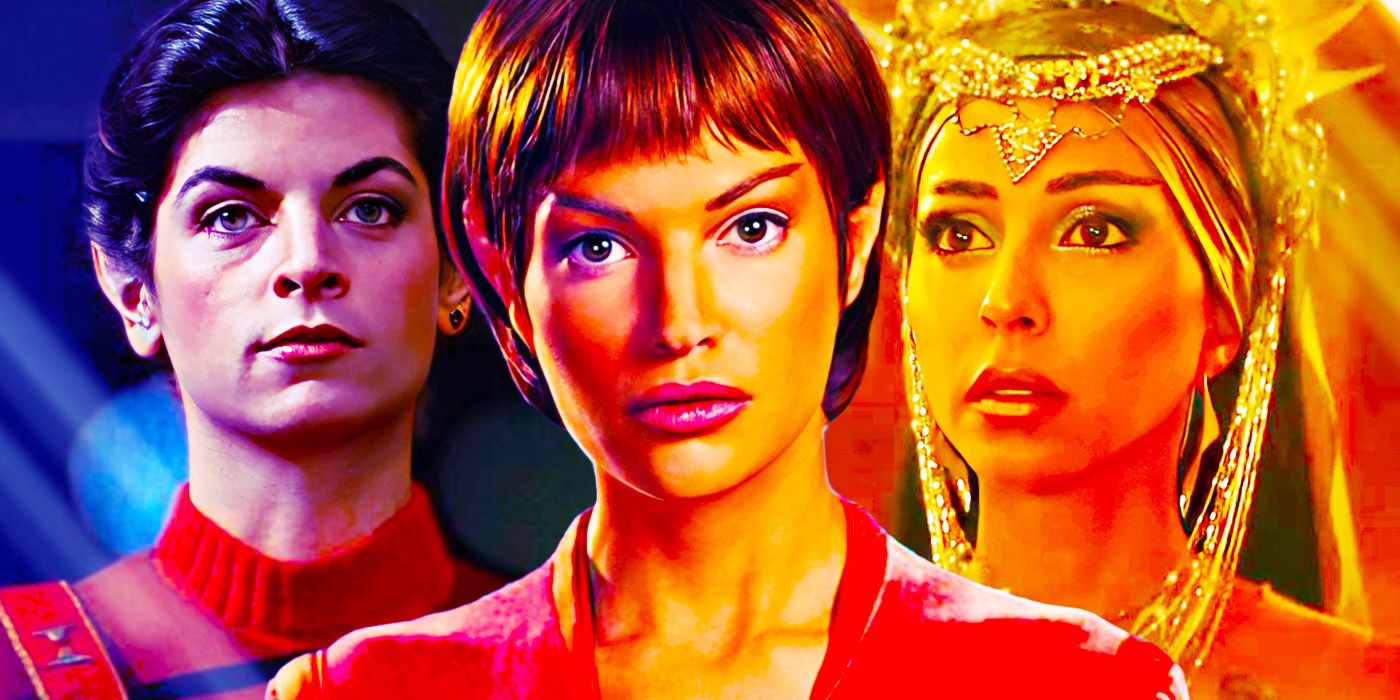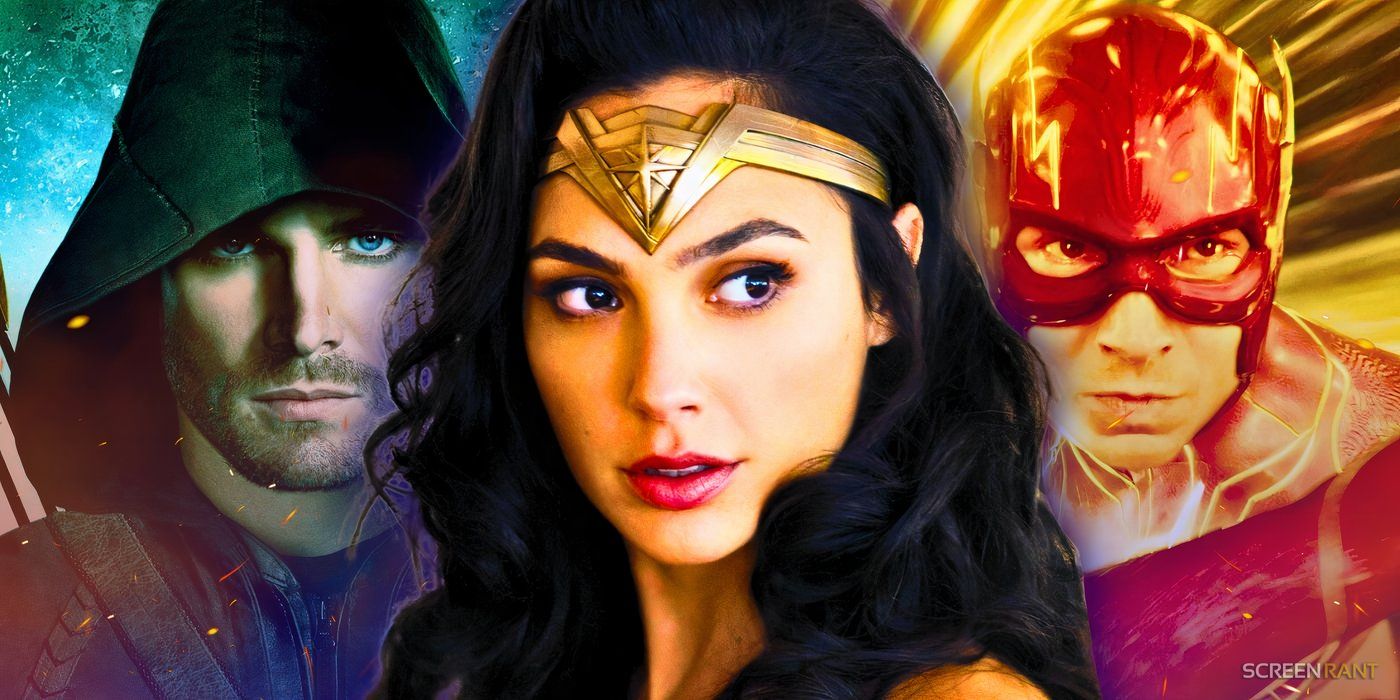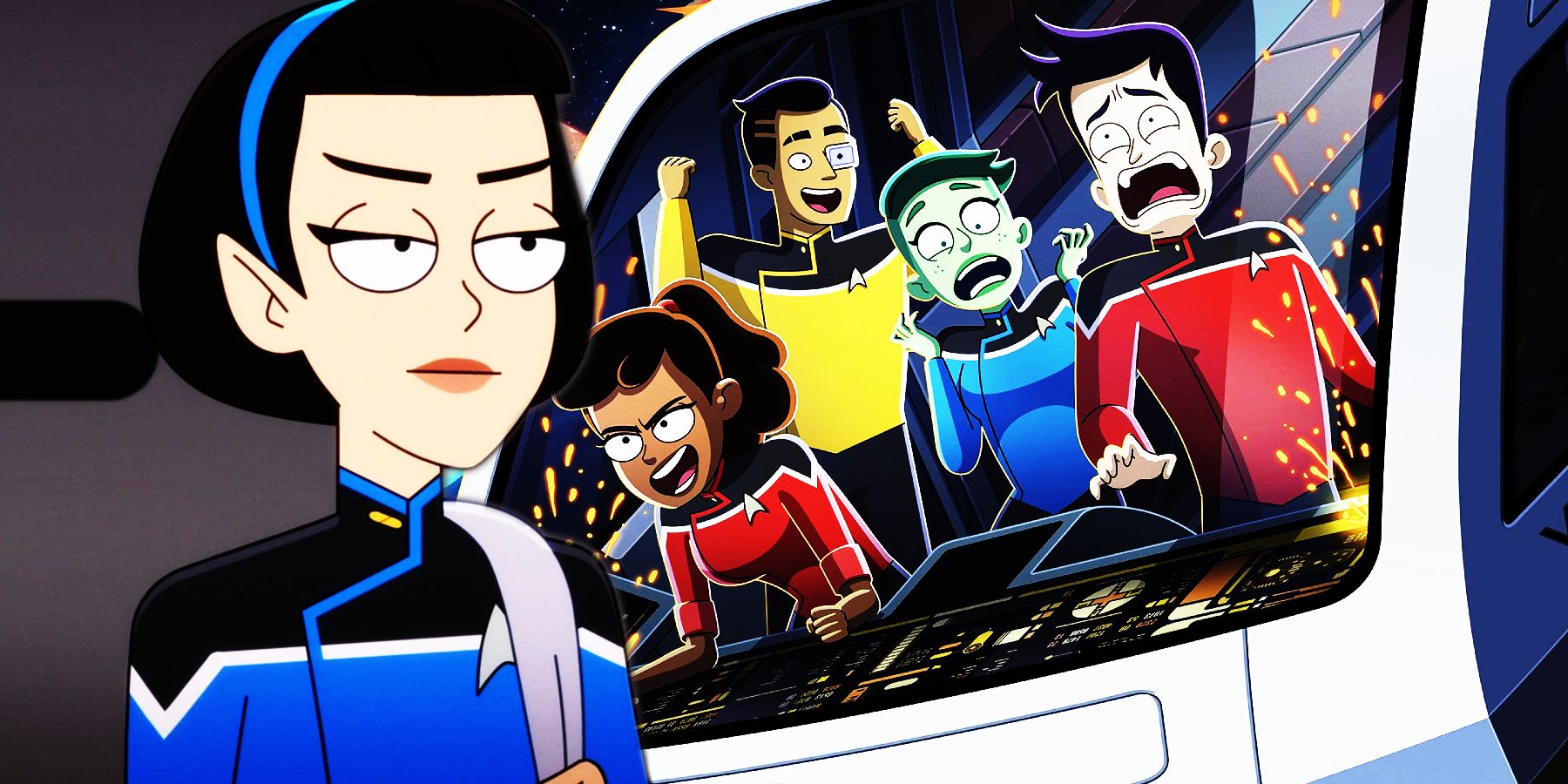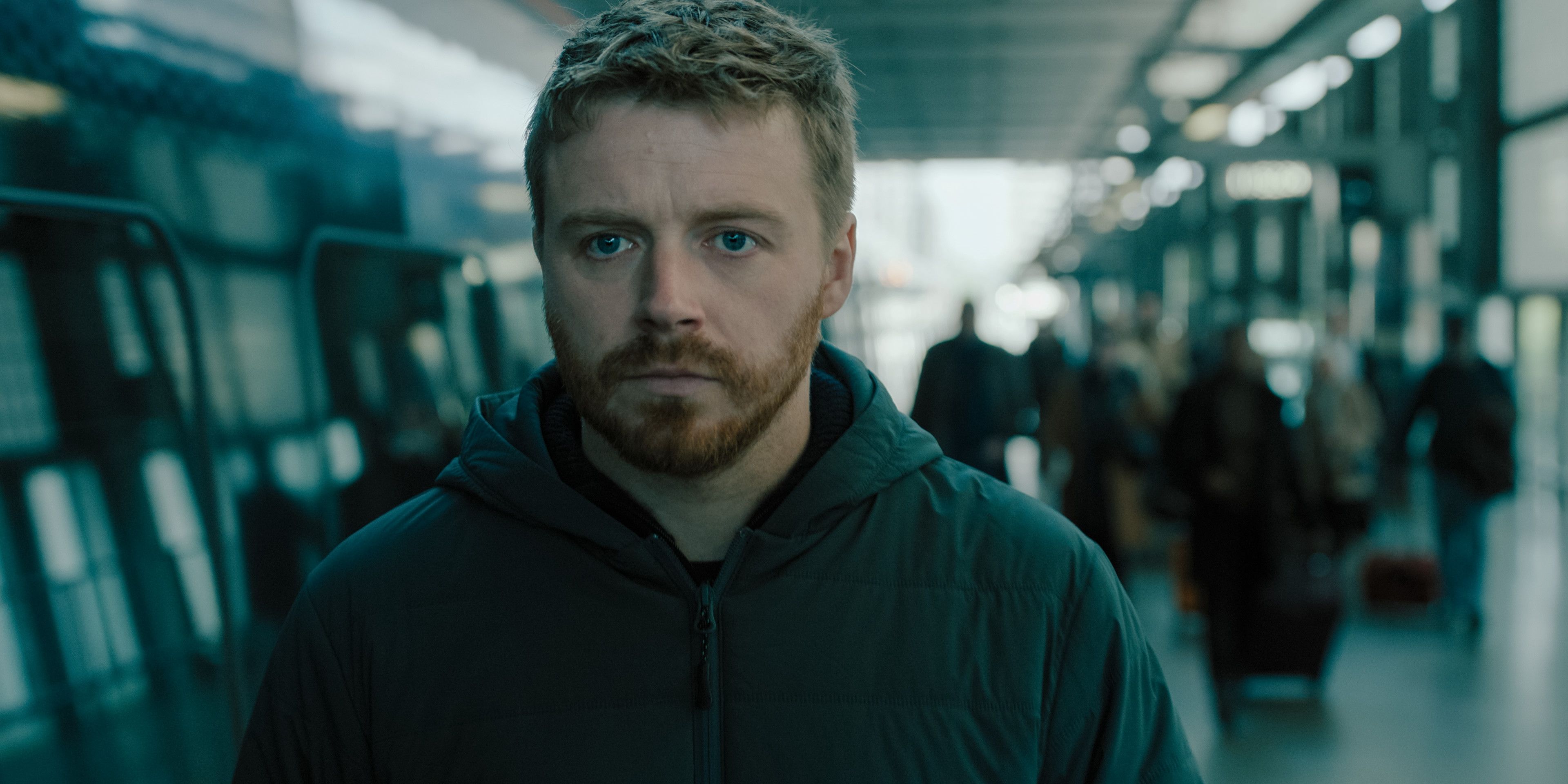Warning: SPOILERS for Split ahead
–
In 2015, after a long-lasting slump that had critics and moviegoers questioning the state of his career, writer-director M. Night Shyamalan returned to form with the critically and commercially successful horror-thriller The Visit. This year, Shyamalan proved that The Visit wasn’t just a one-off, with the release of his massively successful follow-up, Split. Echoing the high points of his early career, Split was a true and welcome return to form for Shyamalan: A cunning and explosive horror-thriller centering around a tour-de-force performance by James McAvoy, who plays a man named Kevin Wendell Crumb, diagnosed with a severe form of Dissociative Identity Disorder that causes him to manifest 23 distinct personalities. Crumb kidnaps three teenage girls and holds them prisoner as he gradually manifests a final, seemingly indestructible personality called The Beast.
Split also blew the minds of Shyamalan’s long-time fans by featuring an end-credits coda that revealed none other than Bruce Willis portraying his everyman superhero David Dunn and a direct mention of Elijah Price/Mr. Glass, the villain portrayed by Samuel L. Jackson – meaning that Split is part of a shared universe with Unbreakable.
Split was released on digital HD on April 4th, with a scheduled Blu-ray and DVD release on April 18th. As part of the package, Split features the usual bells and whistles of deleted scenes, making of documentaries, and an alternate ending. The theatrical ending of Split saw McAvoy, transformed into his monstrous final personality the Beast – who was later renamed “the Horde” by the news media – speaking into a mirror and declaring his nefarious intentions. This was then followed by the coda with Bruce Willis in a diner, linking Split to Unbreakable and cementing this story as the origin of a super villain, mirroring how Unbreakable was ultimately about the birth of a superhero.
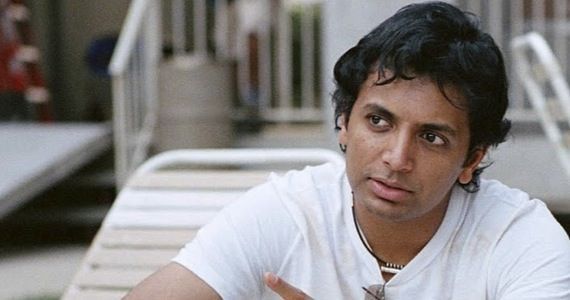
In his video introduction, here’s how Night explained his decision-making process as to why he chose to excise the original ending:
“So this is kind of an alternate end I had for the Horde. I toyed with where it should go. Should it go in? Should it go before the tag in the diner or after? And I tried it in a lot of places, and it didn’t quite feel right. It was the original ending for the Horde in the script, then I wrote the one that’s in the movie at the mirror, and we re-shot that afterwards. And that felt more of, like, the vibe of how I wanted it it end.
“So I had this ending in for a while, then I moved it in a few different places. But it was just too dark, and it made it kind of feel one note for me about what his intentions were, what are his motivations? I just didn’t want the Beast’s motivations to be reduced to just killing, that kind of thing. So that’s why I wrote the ending that you see in the movie, with the mirror. So it was more showing the world what we were capable of… the original ending is a kind of dark and gruesome ending.”
THE ALTERNATE ENDING
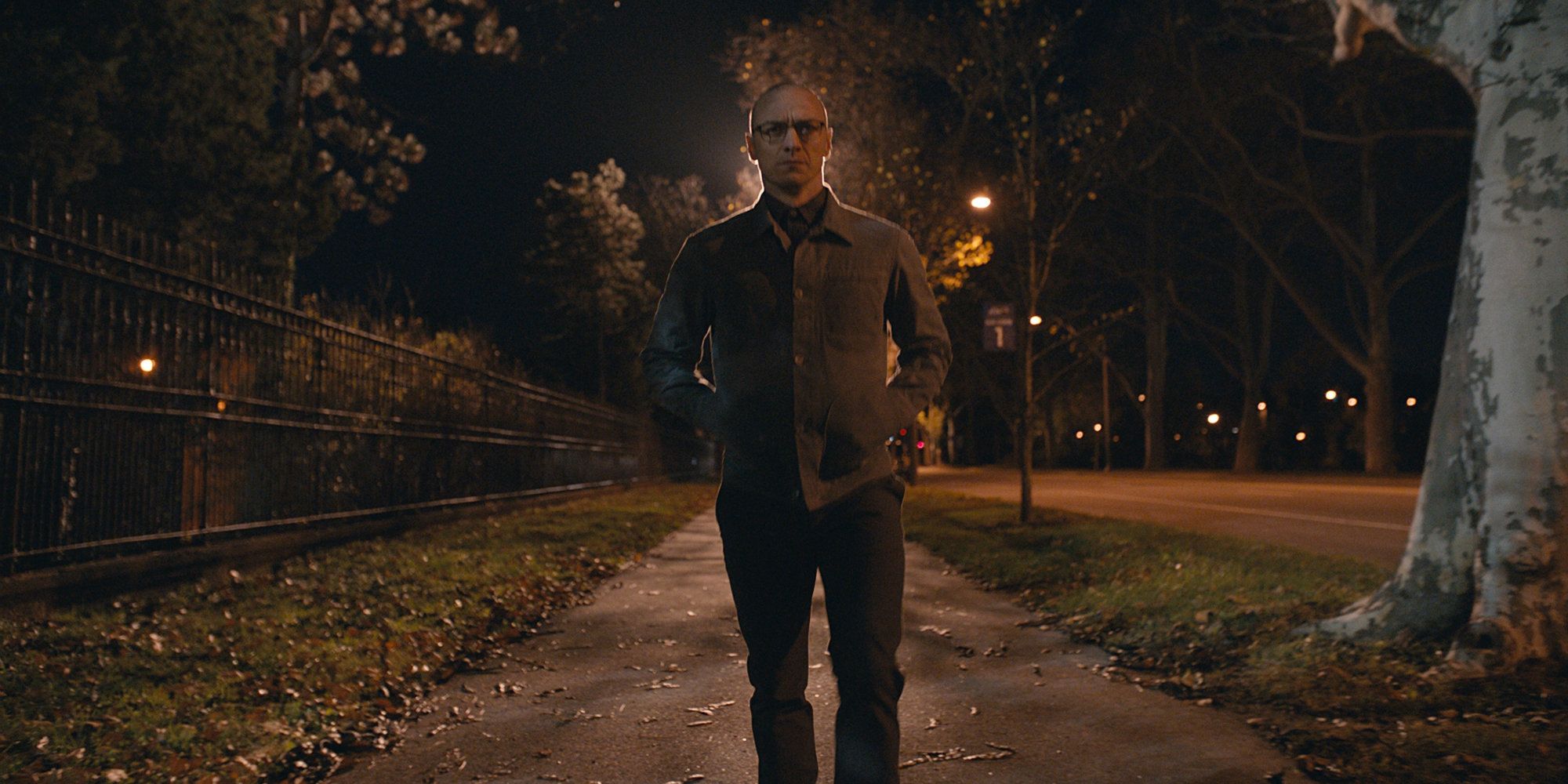
The alternate ending is extremely brief but, as Night suggested, quite dark. It opens with McAvoy’s character dressed in a plaid shirt and glasses – the clothing preferred by Dennis, one of Kevin Crumb’s more fearsome personalities who kidnapped the three teenage girls at the onset of Split. Here, Dennis sits cross-legged on the ledge of a rooftop. As the camera pans from behind him, we see Dennis is overlooking a school, with yellow school buses parked out front. The sounds of school children dismissed for the day can be heard in the distance.
Dennis says, “Look at all those unbroken souls.” Then the voice of one of Kevin Crumb’s more dominant personalities, Patricia, immediately answers Dennis: “Such a waste.”
The implication is clear: Dennis and Patricia are set to unleash the Beast upon a school and the unsuspecting children who matriculate there. It’s also easy to see why Shyamalan opted to shoot the ending he ultimately went with, which was a broader declaration of the Beast’s intentions that leads more directly and quite nicely to the end-credits scene in the diner where David Dunn learns about “the Horde,” setting up the potential future cinematic clash between the hero of Unbreakable and the monster of Split. Dennis saying ‘unbroken souls’ is interesting; seemingly an unmistakable nod to David Dunn and the film about him.
Shyamalan also indicated that the coda linking Split to Unbreakable was always part of the script and always his intention; deleting this alternate ending was simply a matter of not liking how and where it fit in the final cut and deciding there was a better way to end the film.
Fans of both Split and Unbreakable are now simply waiting for Shyamalan to deliver on the shared universe he’s promised: the sequel to Split and Unbreakable where David Dunn will cross paths with the Horde. Who would have guessed just a few short months ago that one of the most anticipated superhero movie crossovers would be the M. Night Shyamalan-verse?
Split is available for download in Digital HD now and arrives on Blu-ray and DVD on April 18th.
